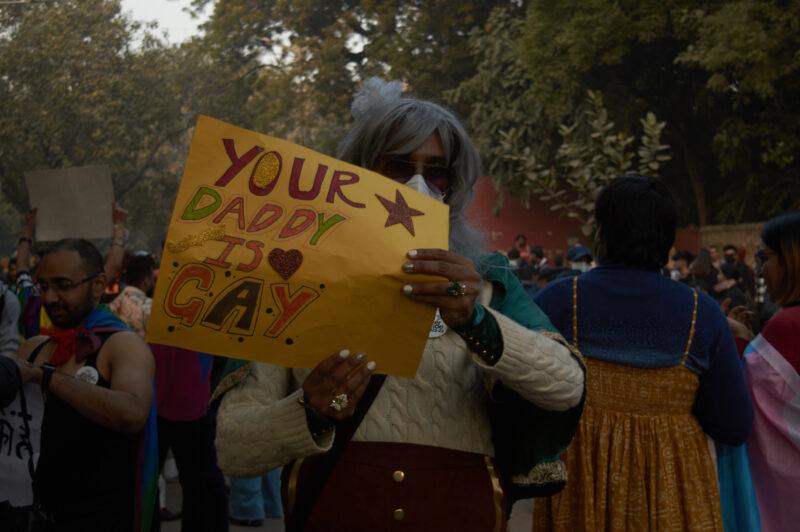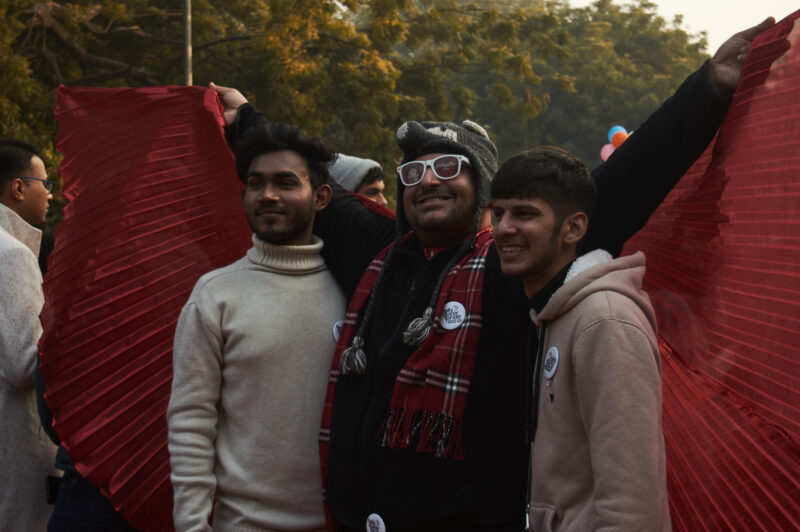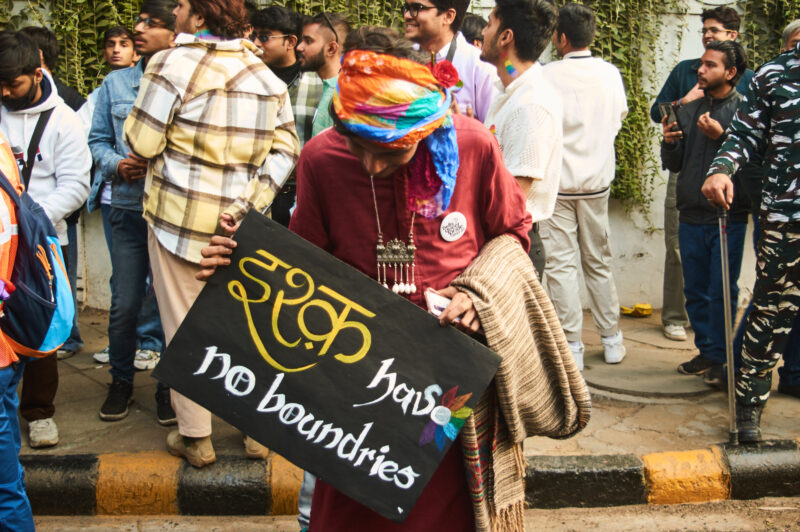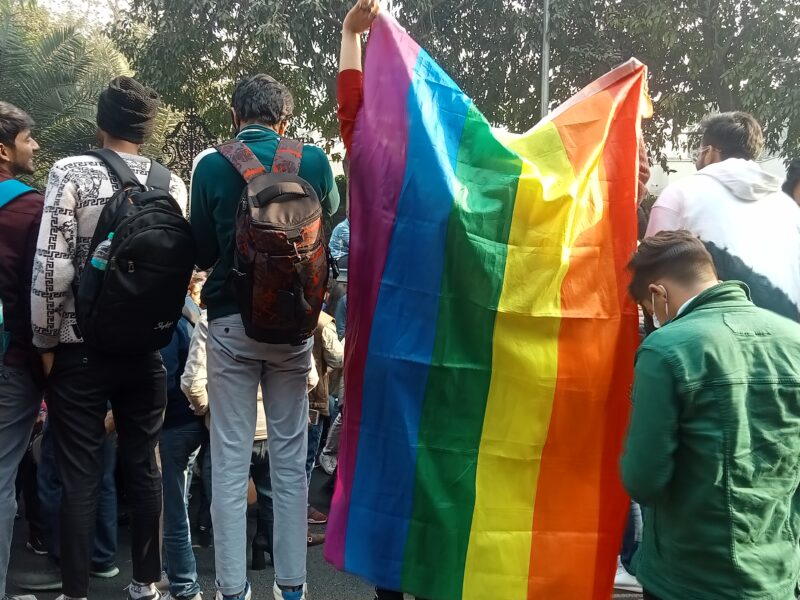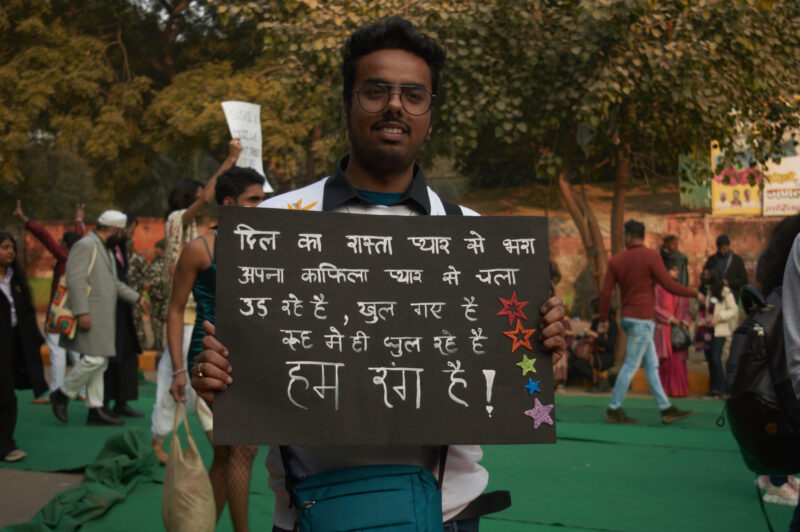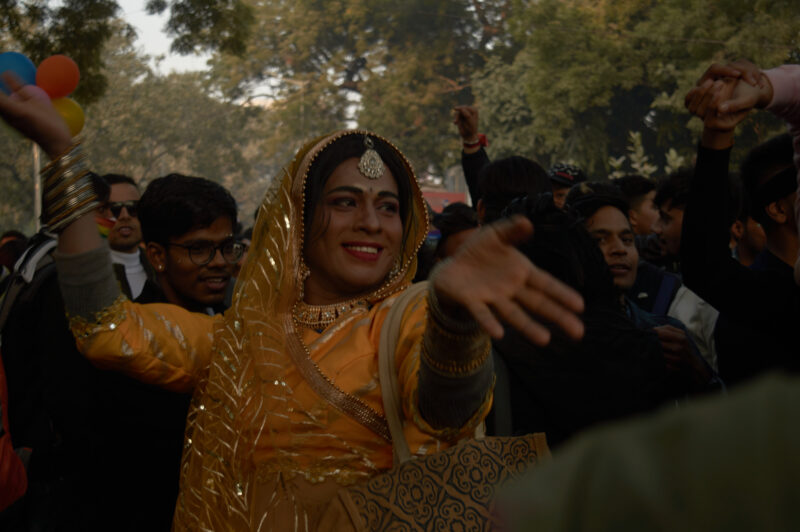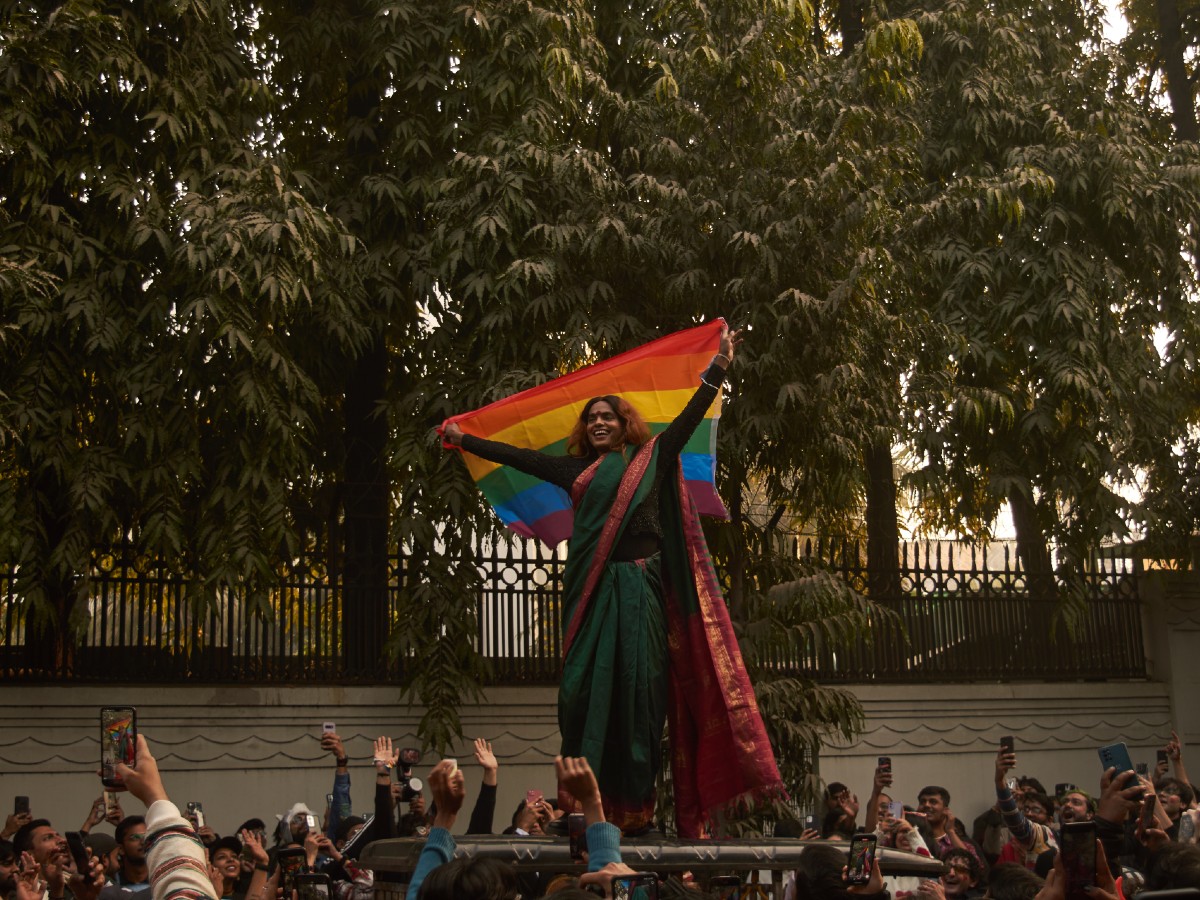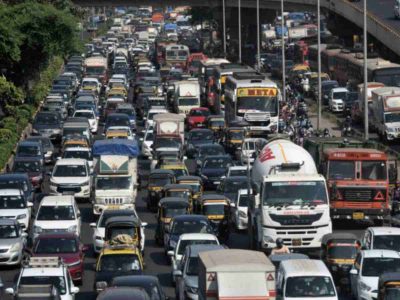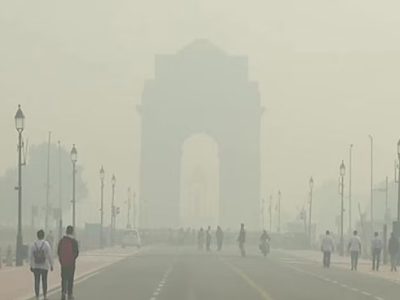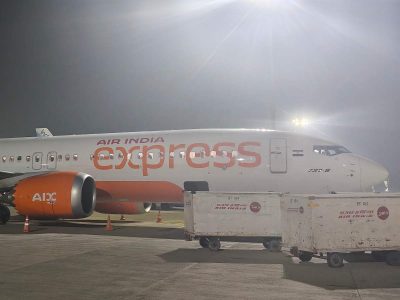At 3 pm on Sunday, January 8, the exit number three of Barakhamba metro station was immersed in colourful dresses, sassy slogans, the sound of dhol and rainbow flags. People smiled, laughed, cheered and hugged each other. Despite the winter chills, more than 2,000 people joined the Delhi Pride Parade and celebrated the different shades of queerness. There were transpersons, lesbians, gays, bisexuals, pansexuals, asexuals, gender nonconforming and intersex people.
“In all the pride parades before this, there were so many people wearing masks to hide their identity. But this time, there were fewer people who were wearing masks. It only shows how our society is growing and becoming more accepting towards queer people,” observes Bharat Aggarwal, a gay man at the pride.
“Being queer, you always feel alone all the time. But being in a pride walk makes you feel that there are a lot of people around you who are like you. This is not just empowering, but also creates a sense of harmony and belonging,” he adds.
Allies from the sexual majority were also present at the pride to shower their support for queer people.
Ramsha Khan, who calls herself an ally of LGBTQIA+ movement, visited the parade for the first time.
“I came here with no expectations. And once I am here, I realise that this is not just a parade, it is a festival of love, sexuality and identity. There is so much warmth, and people are just cheering each other, it all feels so nice,” she says.
The walk started from the Barakhamba metro station and ended at Jantar Mantar area. The organisers said that the march was not just for the LGBTQIA+ community, but also for the minorities of India, indigenous people displaced from their homelands, persecution of activists, clean environment and people who lost their lives during the pandemic.

